Abstract
Effects of long-term treatment with pindolol (10 mg twice daily) and metoprolol (100 mg twice daily) on lung function and blood pressure were investigated in eight patients with chronic obstructive lung disease and hypertension. After a placebo period, both beta-adrenoceptor blockers were administered double-blind and cross-over for 4 weeks. By assessing parameters of expiratory flow an attempt was made to distinguish between large and small airways function. Diastolic blood pressure decreased significantly during both pindolol and metoprolol (P less than 0.01). Except for a decrease in forced expiratory volume in 1 s (FEV1) during metoprolol treatment, there was no other change in expiratory flow parameters after placebo or both beta-adrenoceptor blockers. Inhalation of terbutaline induced a small improvement in large airways function after placebo and metoprolol, but not after pindolol; there was no effect of terbutaline on parameters of small airways function. If a beta-adrenoceptor blocker is necessary in patients with chronic obstructive lung disease, a beta 1-adrenoceptor selective blocker is preferred in combination with bronchodilator agents.
Full text
PDF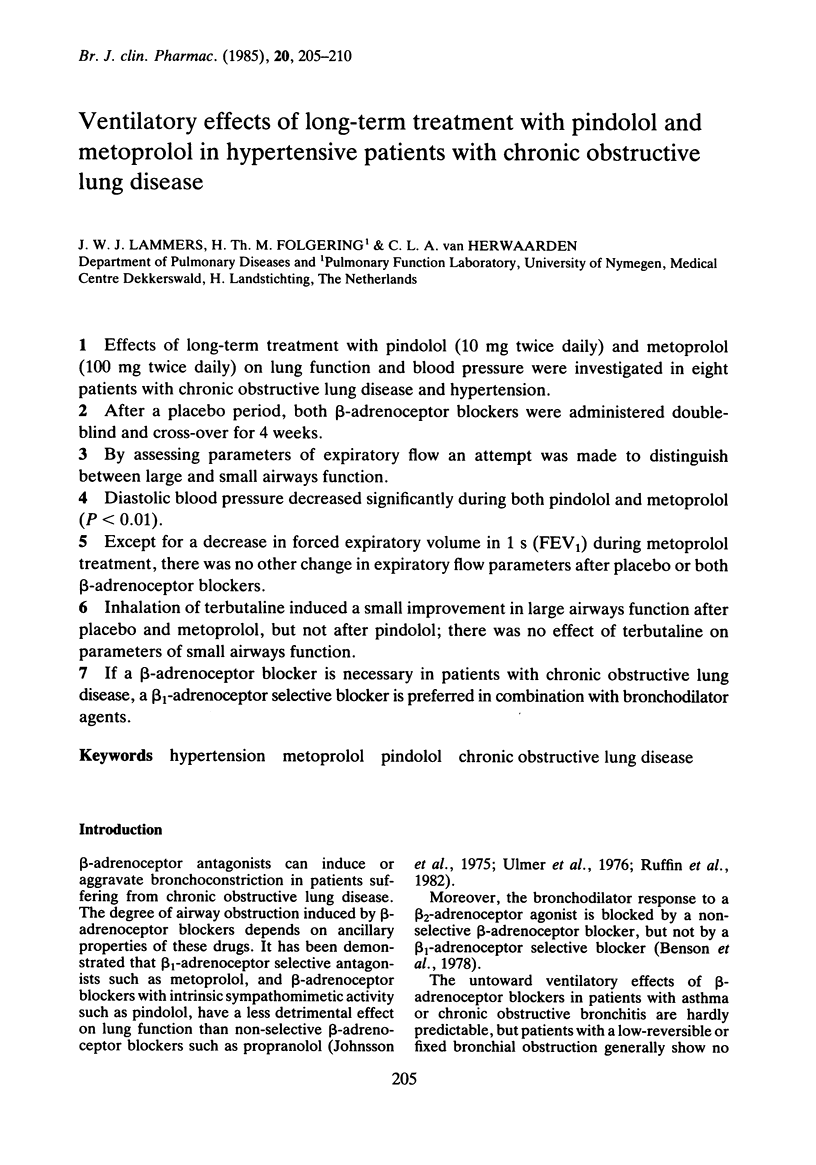
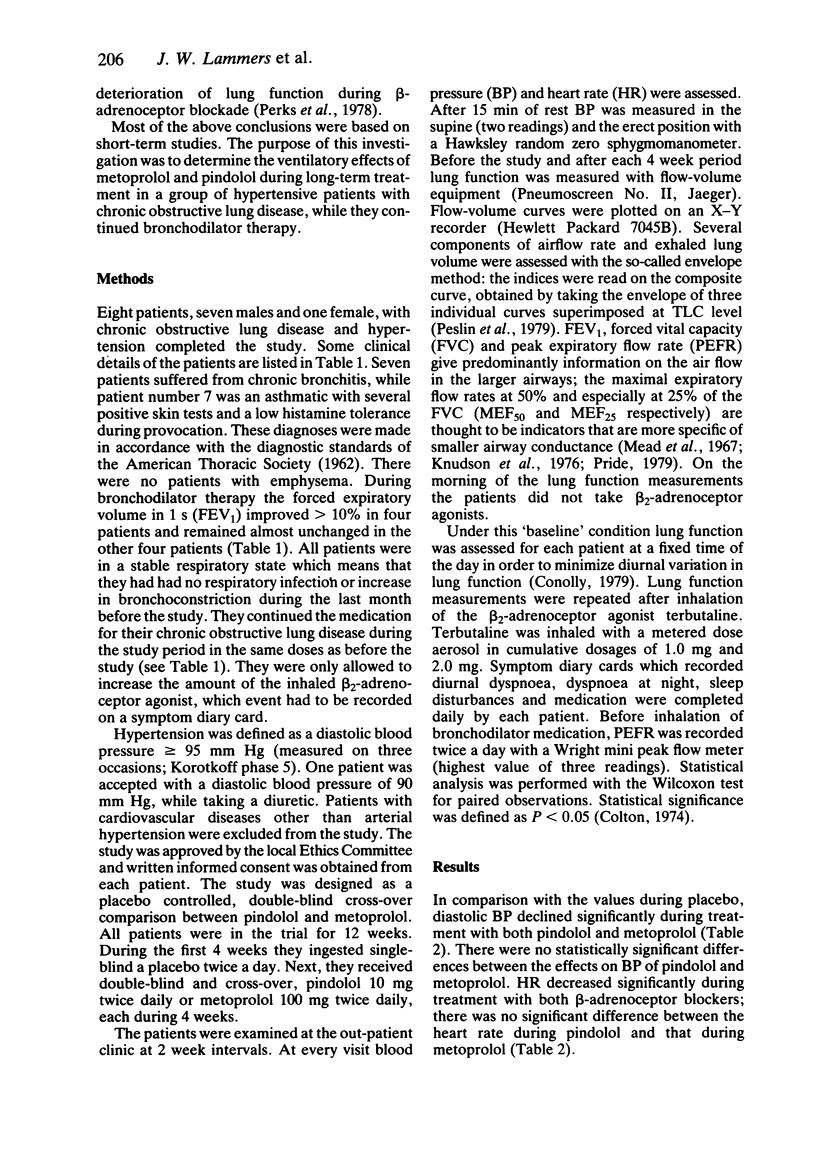
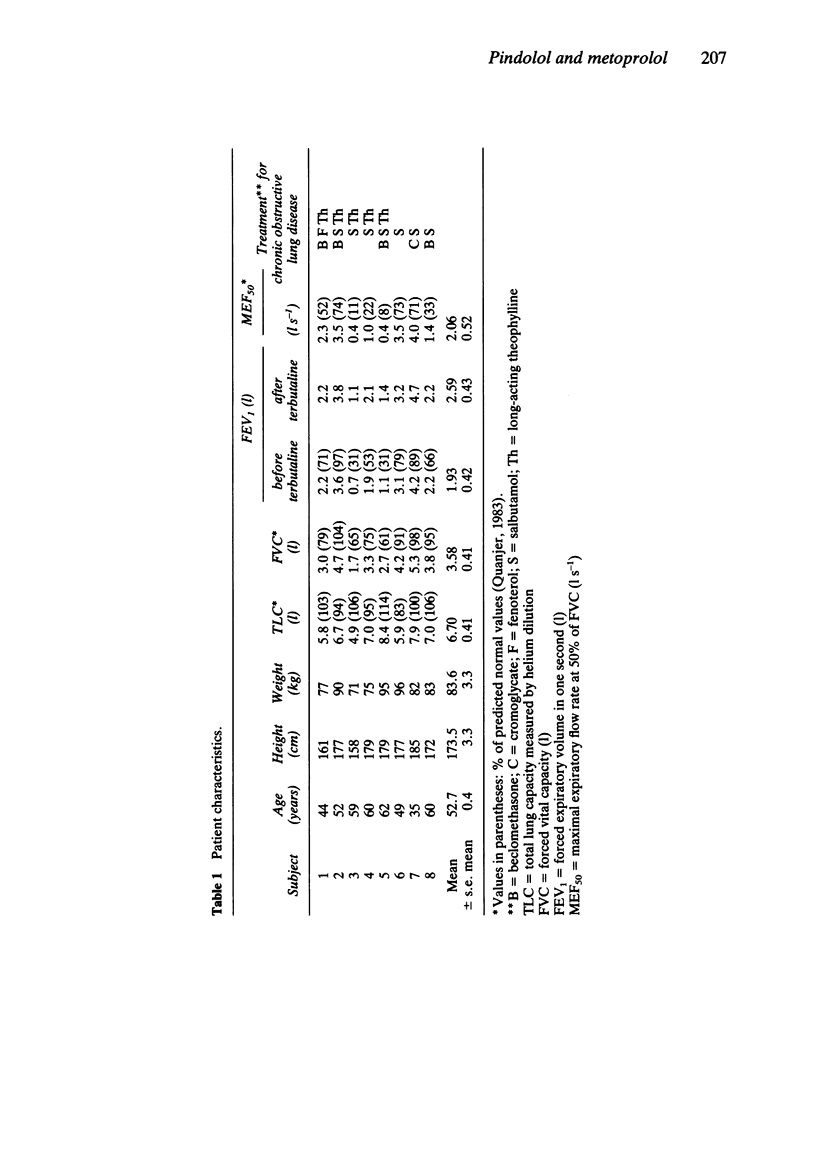
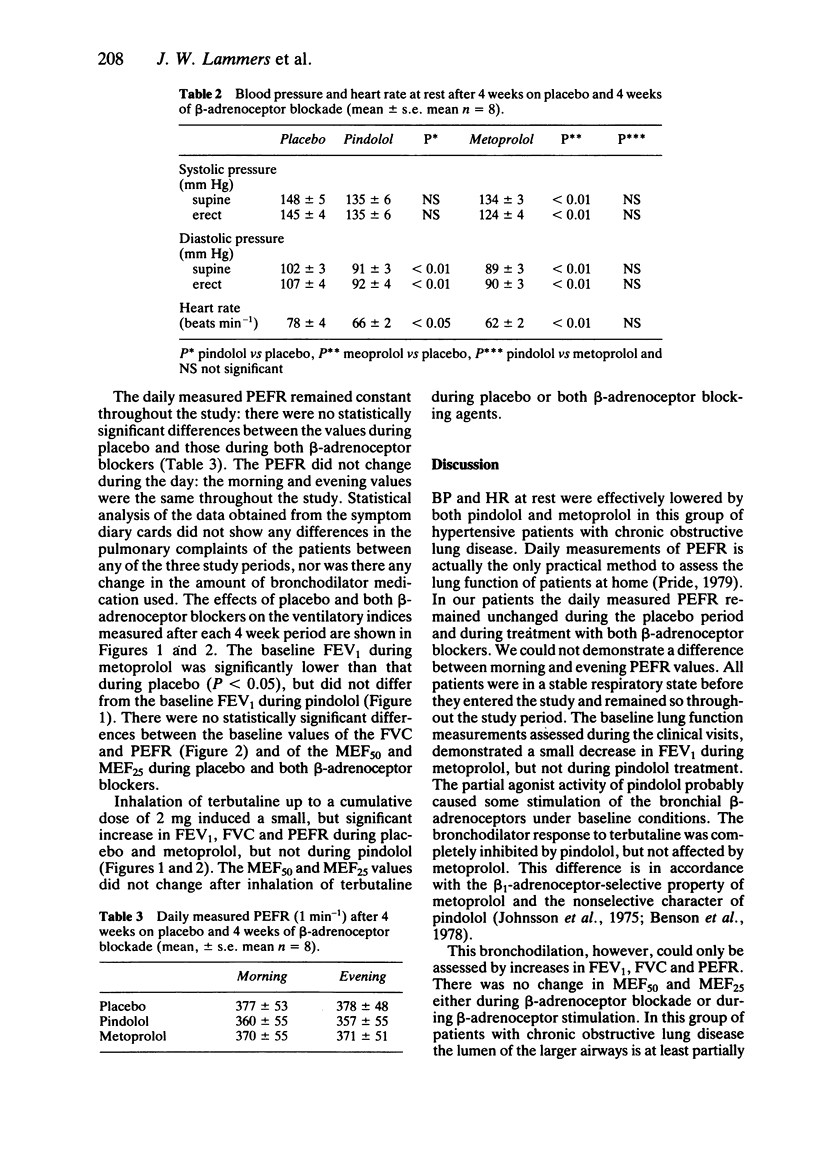
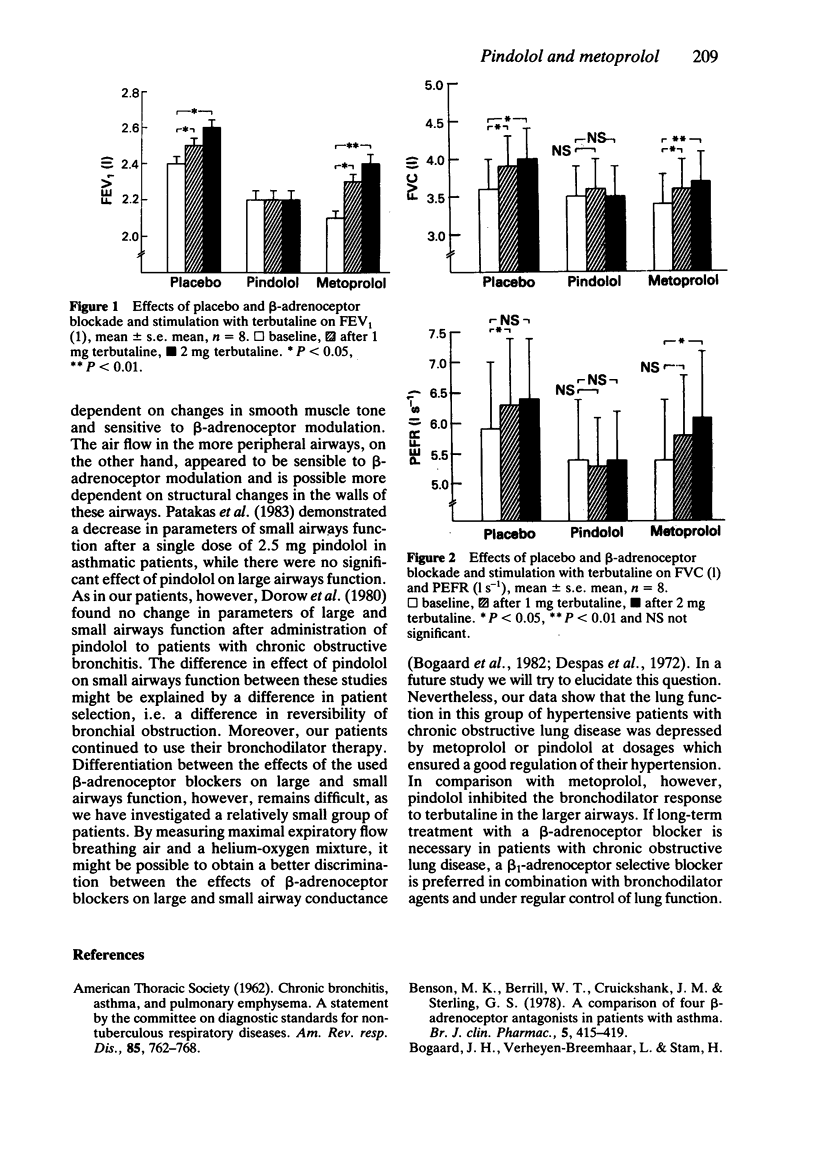
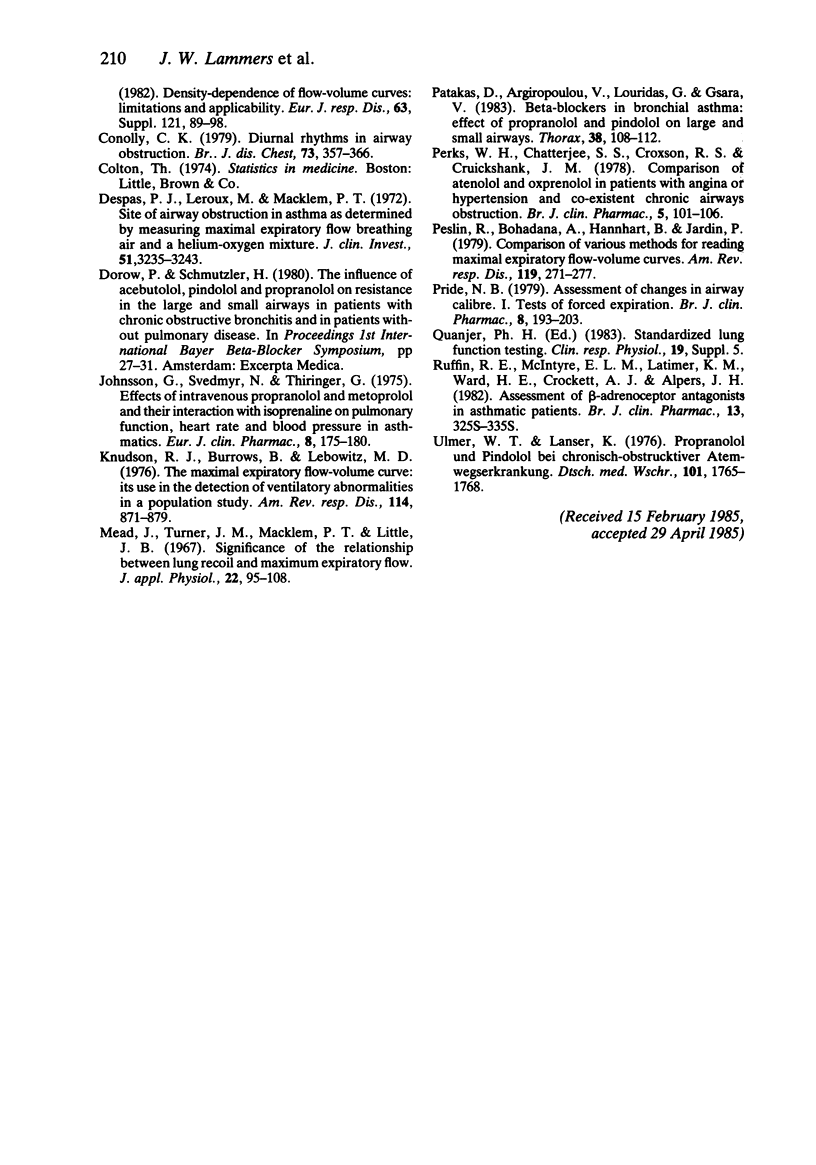
Selected References
These references are in PubMed. This may not be the complete list of references from this article.
- Benson M. K., Berrill W. T., Cruickshank J. M., Sterling G. S. A comparison of four beta-adrenoceptor antagonists in patients with asthma. Br J Clin Pharmacol. 1978 May;5(5):415–419. doi: 10.1111/j.1365-2125.1978.tb01647.x. [DOI] [PMC free article] [PubMed] [Google Scholar]
- Despas P. J., Leroux M., Macklem P. T. Site of airway obstruction in asthma as determined by measuring maximal expiratory flow breathing air and a helium-oxygen mixture. J Clin Invest. 1972 Dec;51(12):3235–3243. doi: 10.1172/JCI107150. [DOI] [PMC free article] [PubMed] [Google Scholar]
- Johnsson G., Svedmyr N., Thiringer G. Effects of intravenous propranolol and metoprolol and their interaction with isoprenaline on pulmonary function, heart rate and blood pressure in asthmatics. Eur J Clin Pharmacol. 1975 Apr 4;8(3-4):175–180. doi: 10.1007/BF00567111. [DOI] [PubMed] [Google Scholar]
- Knudson R. J., Burrows B., Lebowitz M. D. The maximal expiratory flow-volume curve: its use in the detection of ventilatory abnormalities in a population study. Am Rev Respir Dis. 1976 Nov;114(5):871–879. doi: 10.1164/arrd.1976.114.5.871. [DOI] [PubMed] [Google Scholar]
- Mead J., Turner J. M., Macklem P. T., Little J. B. Significance of the relationship between lung recoil and maximum expiratory flow. J Appl Physiol. 1967 Jan;22(1):95–108. doi: 10.1152/jappl.1967.22.1.95. [DOI] [PubMed] [Google Scholar]
- Patakas D., Argiropoulou V., Louridas G., Tsara V. Beta-blockers in bronchial asthma: effect of propranolol and pindolol on large and small airways. Thorax. 1983 Feb;38(2):108–112. doi: 10.1136/thx.38.2.108. [DOI] [PMC free article] [PubMed] [Google Scholar]
- Perks W. H., Chatterjee S. S., Croxson R. S., Cruickshank J. M. Comparison of atenolol and oxprenolol in patients with angina or hypertension and co-existent chronic airways obstruction. Br J Clin Pharmacol. 1978 Feb;5(2):101–106. doi: 10.1111/j.1365-2125.1978.tb01608.x. [DOI] [PMC free article] [PubMed] [Google Scholar]
- Peslin R., Bohadana A., Hannhart B., Jardin P. Comparison of various methods for reading maximal expiratory flow-volume curves. Am Rev Respir Dis. 1979 Feb;119(2):271–277. doi: 10.1164/arrd.1979.119.2.271. [DOI] [PubMed] [Google Scholar]
- Pride N. B. Assessment of changes in airway calibre I. Tests of forced expiration. Br J Clin Pharmacol. 1979 Sep;8(3):193–203. doi: 10.1111/j.1365-2125.1979.tb01002.x. [DOI] [PMC free article] [PubMed] [Google Scholar]
- Ruffin R. E., McIntyre E. L., Latimer K. M., Ward H. E., Crockett A. J., Alpers J. H. Assessment of beta-adrenoceptor antagonists in asthmatic patients. Br J Clin Pharmacol. 1982;13(Suppl 2):325S–335S. doi: 10.1111/j.1365-2125.1982.tb01937.x. [DOI] [PMC free article] [PubMed] [Google Scholar]
- Ulmer W. T., Lanser K. Propranolol und Pindolol bei chronisch-obstruktiver Atemwegserkrankung. Vergleich der bronchokonstriktorischen Wirkung beider beta-Rezeptorenblocker. Dtsch Med Wochenschr. 1976 Nov 26;101(48):1765–1768. doi: 10.1055/s-0028-1104336. [DOI] [PubMed] [Google Scholar]


